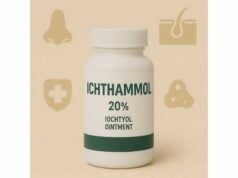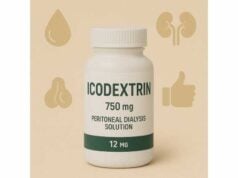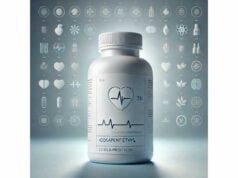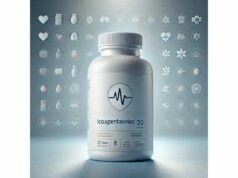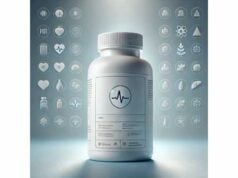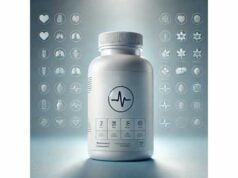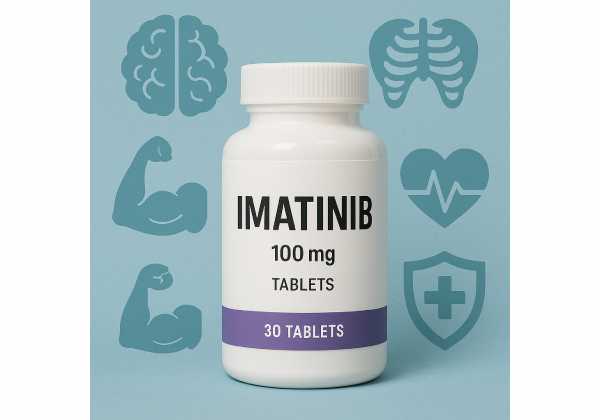
Imatinib is a first-in-class tyrosine kinase inhibitor (TKI) that changed cancer care by targeting the abnormal signaling that drives certain leukemias and tumors. Best known for treating chronic myeloid leukemia (CML) with the BCR-ABL1 fusion gene, it also treats gastrointestinal stromal tumors (GIST) and several rarer conditions. Unlike traditional chemotherapy, imatinib blocks specific enzymes—BCR-ABL1, KIT, and PDGFRA—allowing effective, often long-term control with an oral medicine taken once daily. Most people take it with food to minimize stomach upset. Doses range from 100–800 mg/day, depending on the disease, phase, and response. While generally well tolerated, imatinib can cause fluid retention, cytopenias, liver enzyme elevations, GI irritation, and rashes; careful monitoring keeps risks manageable. This guide explains how imatinib works, who benefits, how to dose and monitor it, when to switch or stop, common pitfalls, and how the latest guidelines position imatinib among modern TKIs.
Key Insights
- Selectively blocks BCR-ABL1, KIT, and PDGFRA to control CML, GIST, and other rare cancers.
- Typical adult dosing: 400 mg once daily for chronic-phase CML or GIST; up to 600–800 mg/day for advanced phases or progression.
- Take with a meal and water; avoid strong CYP3A4 inducers (e.g., rifampin, St John’s wort) and grapefruit.
- Not for use in pregnancy; people with significant hepatic or cardiac disease need individualized monitoring and care.
Table of Contents
- What is imatinib and how it works
- Who benefits and when to use
- Dosing: how to take it correctly
- Monitoring response and troubleshooting
- Risks, side effects, and who should avoid
- Evidence at a glance and what it means
What is imatinib and how it works
Targeted mechanism. Imatinib is a small-molecule inhibitor designed to fit into the ATP-binding pocket of specific tyrosine kinases. The best studied targets are:
- BCR-ABL1 (the Philadelphia chromosome fusion) driving CML and some cases of Ph+ acute lymphoblastic leukemia (ALL).
- KIT (CD117) and PDGFRA, commonly activated in gastrointestinal stromal tumors (GIST) and certain dermatofibrosarcoma protuberans (DFSP) and hypereosinophilic syndromes.
By occupying these pockets, imatinib locks the kinases into an inactive state, shutting down downstream signals that promote uncontrolled cell growth and survival.
What makes imatinib different. Before TKIs, CML often progressed inexorably from chronic phase to blast crisis. Imatinib made deep molecular responses routine for many patients and transformed CML into a manageable, often near-normal-lifespan condition. For GIST, it brought durable control to tumors that were previously chemo-refractory, and it remains the anchor therapy in the adjuvant and metastatic settings when tumors are sensitive (notably KIT exon 11 mutations).
Pharmacology in practice.
- Absorption and administration: Oral, once daily in most indications. Food taken with a large glass of water reduces GI irritation and helps tolerability.
- Metabolism: Primarily hepatic via CYP3A4; the main active metabolite (N-desmethyl imatinib) contributes to overall effect.
- Drug–drug interactions: Strong CYP3A4 inhibitors (e.g., certain azoles, macrolides) can raise levels; strong inducers (e.g., rifampin, carbamazepine, phenytoin, St John’s wort) can lower them. Warfarin interactions are possible—low-molecular-weight heparin is often preferred when full anticoagulation is required.
- Tissue effects: Edema (periorbital, peripheral) reflects on-target vascular effects; cramps reflect altered intracellular signaling in muscle.
Resistance biology. Resistance arises via:
- Kinase domain mutations in BCR-ABL1 (e.g., T315I and others), KIT, or PDGFRA that reduce binding.
- Gene amplification or alternative pathways that bypass the blocked kinase.
- Poor adherence or insufficient exposure (e.g., from drug interactions or malabsorption).
When resistance appears, strategies include dose optimization, switching to a second- or third-generation TKI, or (in GIST) tailoring therapy to the tumor’s mutation profile.
Who benefits and when to use
Key approved settings (high-level overview).
- Chronic myeloid leukemia (CML), chronic phase: Standard front-line option, especially when comorbidity profile favors a gentler toxicity footprint. Newer TKIs may achieve faster deep responses, but imatinib remains an excellent choice for many, particularly when cardiovascular risk or pleural effusion risk makes other TKIs less suitable.
- CML, accelerated or blast phase: Higher doses (600–800 mg/day) plus close monitoring; consider transplant referral and combination strategies depending on response.
- Philadelphia-positive ALL (adult and pediatric): Used in combination with multiagent chemotherapy or steroid-sparing regimens under protocolized care; dosing and timing are disease- and age-specific.
- GIST (metastatic or unresectable): First-line therapy when the tumor harbors sensitive KIT or PDGFRA mutations (e.g., KIT exon 11). For PDGFRA D842V, imatinib is ineffective—other agents are preferred.
- Adjuvant GIST: After complete resection of high-risk, imatinib-sensitive tumors, adjuvant therapy reduces relapse risk. Duration depends on risk assessment (mutational subtype, size, mitotic rate, and rupture status).
- Other rare indications: Dermatofibrosarcoma protuberans (DFSP) with PDGFB rearrangements, hypereosinophilic syndrome with FIP1L1-PDGFRA fusion, and myelodysplastic/myeloproliferative overlap conditions with PDGFR rearrangements.
Choosing imatinib vs newer TKIs (CML). Consider:
- Efficacy kinetics: Second/third-generation TKIs (e.g., dasatinib, nilotinib, bosutinib) often achieve faster deep molecular responses.
- Safety and comorbidities: Imatinib typically carries less cardiovascular risk, fewer pleural effusions, and fewer metabolic complications than some newer agents. For patients with coronary disease, peripheral arterial disease, pulmonary issues, or diabetes, imatinib may be favored.
- Long-term plan: Patients aiming for treatment-free remission (TFR) can often achieve it with imatinib if they reach and maintain deep responses (e.g., MR^4–MR^4.5) and agree to intense PCR monitoring during discontinuation attempts.
- Cost and access: Long-experience, generics, and wide availability make imatinib accessible globally.
When not to rely on imatinib.
- Known resistant genotypes: In CML with specific high-level resistance mutations (e.g., T315I), imatinib will not work; consult mutation-guided TKI selection. In GIST, PDGFRA D842V mutations are inherently imatinib-resistant.
- Rapidly progressive or blast-phase disease: Consider intensive approaches and faster-acting TKIs; transplant evaluation is often appropriate.
- Severe hepatic impairment without close monitoring: Because metabolism is hepatic, alternative agents and dose changes may be necessary.
Who may benefit most.
- People prioritizing a favorable long-term tolerability profile and lower cardiovascular risk.
- Patients seeking a cost-effective and well-validated therapy with decades of outcome data.
- Those eligible for TFR after sustained deep responses and enthusiastic about frequent monitoring.
Dosing: how to take it correctly
General administration rules.
- Take with a meal and a large glass of water. This reduces nausea, heartburn, and abdominal discomfort.
- Swallow tablets whole; if unable, disperse in water or apple juice per product directions and drink immediately.
- Consistency matters: Take at the same time daily; set reminders to support adherence.
Typical adult dosing by indication.
- CML, chronic phase: 400 mg once daily. In suboptimal responders, clinicians may increase to 600–800 mg/day if tolerated and if no alternative TKI is preferred.
- CML, accelerated/blast phase: 600–800 mg/day (often split 400 mg twice daily at 800 mg total).
- GIST (metastatic/unresectable): 400 mg once daily as a standard start. Some protocols escalate to 800 mg/day upon progression or for certain mutation subsets (e.g., KIT exon 9), balancing benefit and tolerability.
- Adjuvant GIST: 400 mg once daily, commonly for 3 years in high-risk, imatinib-sensitive disease; duration may vary by risk category and regional guidance.
- DFSP / PDGFR-rearranged neoplasms: Doses typically range from 400–800 mg/day, individualized to response and adverse effects.
- Pediatric CML/Ph+ indications: Dosing is body-surface-area–based (mg/m²/day), given once daily or divided; children require specialized protocols and growth monitoring.
Dose modifications.
- Hematologic toxicity (cytopenias): Temporary interruption and dose reduction are common; clinicians rule out disease progression in CML before resuming.
- Hepatotoxicity: Hold for significant transaminase or bilirubin elevations; resume at a lower dose when resolved.
- Fluid retention/edema: Manage with supportive care (salt moderation, diuretics when appropriate), dose adjustment, and evaluation for cardiac/renal/liver contributions.
Drug–drug and food interactions (practical list).
- Avoid strong CYP3A4 inducers: rifampin, carbamazepine, phenytoin, phenobarbital, St John’s wort (can markedly reduce exposure and efficacy).
- Use caution with strong CYP3A4 inhibitors: ketoconazole, clarithromycin, certain HIV/HCV agents (can raise levels and toxicity).
- Warfarin: Interaction risk—many clinicians prefer LMWH if therapeutic anticoagulation is needed.
- Grapefruit and Seville orange: Avoid (CYP3A4 inhibition).
- Antacids/PPIs/H2 blockers: pH effects are less critical than with some other TKIs; still, separate antacids from dosing if possible to minimize GI symptoms.
Adherence and formulation tips.
- If you miss a dose and remember within several hours, take it with food; otherwise skip and resume the next day—do not double.
- Ask about generic imatinib options and pill size/strengths (e.g., 100 mg, 400 mg) to simplify regimens and reduce pill burden.
- Discuss travel routines: carry extra doses, keep a medication list, and plan time-zone dosing.
Monitoring response and troubleshooting
CML response milestones (illustrative framework).
- Baseline: Complete blood count (CBC), comprehensive metabolic panel (CMP), bone marrow or peripheral blood testing to confirm the BCR-ABL1 transcript and risk stratification.
- Early molecular monitoring: Quantitative BCR-ABL1 (International Scale, IS) typically at 3 months, 6 months, and 12 months, then every 3–6 months while on therapy.
- Milestones often used in practice:
- ≤10% BCR-ABL1 (IS) at 3 months,
- ≤1% at 6 months,
- ≤0.1% (major molecular response, MMR) by 12 months.
Deeper responses (MR^4, MR^4.5) reflect very low or undetectable disease; sustaining these may permit treatment-free remission (TFR) attempts in carefully selected patients.
GIST monitoring.
- Imaging: Contrast-enhanced CT or MRI every 8–12 weeks initially, then spacing out as disease stabilizes.
- Mutation-guided decisions: KIT exon 11 tumors often show durable responses at 400 mg; KIT exon 9 tumors may need higher dosing; PDGFRA D842V is inherently resistant—switch strategies.
When to adjust therapy.
- Suboptimal molecular response (CML): Confirm adherence, check for interactions, consider dose increase if tolerated, or switch to another TKI based on ABL1 mutation testing and comorbidities.
- Hematologic relapse or rising transcript levels: Repeat testing to rule out lab variability; if confirmed, perform mutation analysis to select the next TKI.
- Toxicity-driven changes: Persistent grade ≥3 toxicities despite supportive care justify dose reduction or switching to a better-tolerated TKI.
Treatment-free remission (TFR) basics (CML).
- Eligibility (typical elements): Chronic-phase CML, on TKI for ≥3 years, sustained deep molecular response (e.g., MR^4–MR^4.5) for ≥2 years, and reliable access to frequent PCR monitoring.
- Monitoring after stopping: Often monthly for 6 months, then every 6–8 weeks through year one, and every 3 months thereafter for years 2–3.
- If molecular relapse occurs (loss of MMR, >0.1% IS): restart a previously effective TKI promptly—most patients recapture responses within weeks to months.
Exposure and therapeutic drug monitoring (TDM).
- Some centers measure imatinib trough levels to troubleshoot inadequate responses or unusual toxicity, using thresholds associated with response in CML or GIST. TDM is not mandatory but can be useful when adherence is excellent and interactions have been excluded.
Everyday troubleshooting tips.
- Edema and cramps: Elevate legs, ensure adequate magnesium and hydration; diuretics and dose adjustments help when conservative measures fail.
- GI upset: Always dose with food, consider antacid strategies, and split dosing if necessary (for higher totals).
- Fatigue: Rule out anemia, hypothyroidism, vitamin deficiencies, or sleep issues; adjust dose only after addressing reversible causes.
- Skin reactions: Mild rashes respond to moisturizers and antihistamines; severe or exfoliative rashes require urgent evaluation and possible drug hold.
Risks, side effects, and who should avoid
Common adverse effects (often dose-related and manageable).
- Fluid retention/edema: Periorbital puffiness and ankle swelling are classic; monitor weight and shortness of breath.
- Gastrointestinal: Nausea, abdominal discomfort, diarrhea; taking with food and water is protective.
- Musculoskeletal: Cramps, myalgias, bone pain—stretching, hydration, magnesium, and tonic water (quinine) may help; discuss before trying remedies.
- Dermatologic: Rashes, pruritus, photosensitivity; use sun protection and gentle skincare.
- Hematologic: Neutropenia, anemia, thrombocytopenia—usually early in therapy and managed with holds/reductions.
Less common but important risks.
- Hepatotoxicity: Monitor ALT/AST and bilirubin; hold or reduce for significant elevations.
- Cardiac effects: Rare congestive heart failure; evaluate new dyspnea, orthopnea, or rapid weight gain.
- Renal effects: Long-term therapy can affect creatinine in some; periodic renal monitoring is prudent.
- Endocrine/metabolic: Weight gain or fluid shifts can occur; diabetes control generally unaffected compared with some newer TKIs, but individual variation exists.
- Bleeding risk: Platelet dysfunction is reported; caution with antiplatelet or anticoagulant therapies.
Drug and food cautions.
- Avoid strong CYP3A4 inducers (rifampin, carbamazepine, phenytoin, phenobarbital, St John’s wort).
- Caution with strong inhibitors (ketoconazole, clarithromycin, certain antivirals) and with grapefruit.
- Warfarin: interaction risk—LMWH often preferred for full anticoagulation during therapy.
Who should avoid or use with heightened caution.
- Pregnancy: Teratogenic risk—avoid during pregnancy; use effective contraception during treatment and for a time after the last dose per product labeling. Discuss family-planning timelines with your oncology team.
- Breastfeeding: Not recommended due to drug passage into milk.
- Severe hepatic disease: Use only with adjusted dosing and close monitoring; consider alternatives if safe exposure cannot be ensured.
- History of serious hypersensitivity to imatinib or excipients.
- Children/adolescents: Use pediatric protocols and monitor growth plates and development.
When to contact your care team urgently. Fever or signs of infection, uncontrolled bleeding or bruising, chest pain or sudden shortness of breath, severe swelling, dark urine or jaundice, or a severe rash.
Evidence at a glance and what it means
Why imatinib remains a first-line standard. Large randomized trials and decades of follow-up demonstrate durable hematologic, cytogenetic, and molecular control in CML with an excellent safety record. In real-world practice, many patients live near-normal lifespans, and a meaningful subset reaches deep molecular responses that allow carefully monitored TFR attempts. While second- and third-generation TKIs often produce faster deep responses, they can carry higher risks of arterial, pulmonary, or metabolic toxicities. For patients with cardiovascular comorbidities, imatinib’s benign cardiometabolic profile often tips the balance in its favor.
Guidelines today. Contemporary guidelines endorse multiple frontline TKI options for chronic-phase CML; the choice depends on comorbidity, mutation profile, speed of response needed, and patient priorities (including cost and TFR goals). In GIST, mutational testing informs both imatinib sensitivity and dosing—KIT exon 11 responds robustly to standard dosing; exon 9 may benefit from higher dosing; PDGFRA D842V requires an alternative agent.
Optimizing outcomes in the clinic.
- Get the dose right: Start with guideline-concordant doses; escalate judiciously for suboptimal responses if tolerability allows.
- Eliminate avoidable interactions: Screen medication lists and supplements at every visit; educate about grapefruit and over-the-counter inducers.
- Measure what matters: Use standardized BCR-ABL1 IS PCR at recommended intervals for CML; obtain mutation testing in GIST and at resistance.
- Plan for the future: Discuss TFR early so patients understand what it takes to qualify (depth, duration, and monitoring intensity).
- Partner with patients: Adherence is the quiet determinant of success; simplify regimens, troubleshoot side effects proactively, and coordinate refills.
Take-home. Imatinib’s longevity in cancer care reflects a rare combination of reliability, tolerability, and affordability. With informed selection, vigilant monitoring, and thoughtful adjustments, most people can expect durable disease control—and some may safely stop therapy under structured programs.
References
- IMATINIB MESYLATE- imatinib tablet, film coated 2024 (Label)
- Chronic Myeloid Leukemia, Version 2.2024, NCCN Clinical Practice Guidelines in Oncology 2024 (Guideline)
- Imatinib optimized therapy improves major molecular response rates in patients with chronic myeloid leukemia 2022 (Study)
- Glivec 2025 (EPAR)
- 2025 European LeukemiaNet recommendations for the management and therapy of chronic myeloid leukemia 2025 (Guideline)
Medical Disclaimer
This article is educational and does not replace personalized medical advice, diagnosis, or treatment. Imatinib dosing, monitoring, and decisions about switching or stopping therapy must be made with your oncology team, using your mutation profile, comorbidities, lab results, and preferences. If you experience fever, unusual bleeding, severe swelling, chest pain, shortness of breath, dark urine, yellowing of the skin or eyes, or a severe rash, seek urgent medical care.
If this guide helped you, please consider sharing it on Facebook, X (formerly Twitter), or any platform you prefer, and follow us for future evidence-based resources. Your support helps us continue producing high-quality content.

